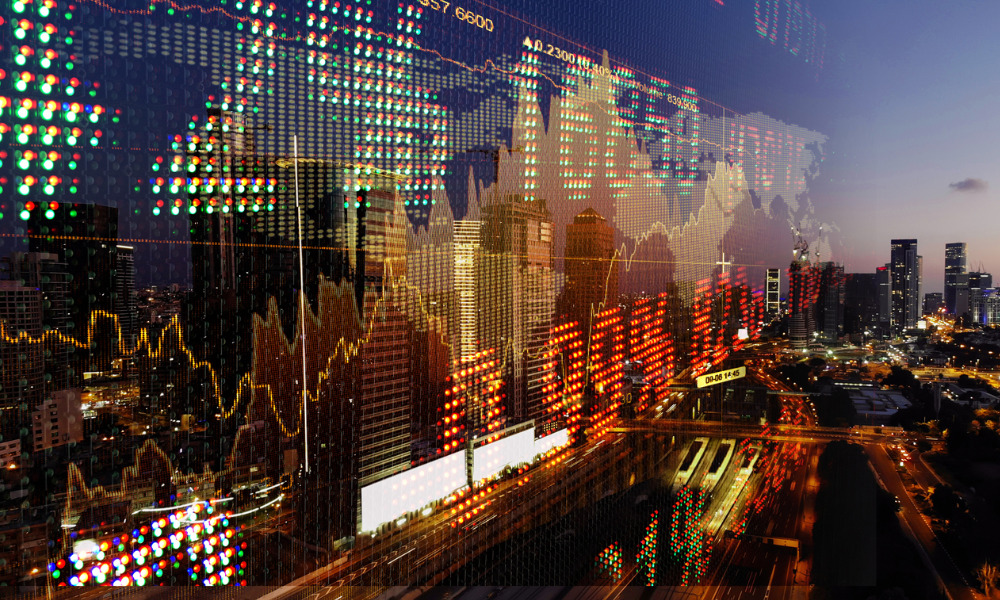

Traders in the $325 billion industry for emerging-market exchange-traded funds are shifting cash toward strategies that focus on brighter spots in the developing world as China’s economy stumbles.
Actively managed ETFs — especially those with exposure to India’s world-beating growth and Latin American stocks — have lured nearly half a billion dollars over the past month, according to data compiled by Bloomberg on US-based funds. At the same time, investors have yanked $3.5 billion out of passive, China-heavy strategies.
While ETFs have risen in popularity as an easy way to access hard-to-reach corners of financial markets, investors in passive vehicles are contending with the drawbacks of a fixed strategy. The rotation to active funds is evidence that everyone — from mom-and-pop traders to professional asset managers — are starting to realize the scope of Beijing’s struggle to deliver on its promised post-Covid growth.
“You don’t want to brainlessly or mindlessly follow an index, right?” said Donald Calcagni, chief investment officer of Mercer Advisors Investment Management. “It’s an opportunity to rethink our emerging-market allocations and take a more flexible approach to how we think about geographical diversification.”
Traders withdrew more than $2 billion in August from the $21.6 billion iShares Emerging Markets ETF, one of the biggest US-based ETFs that focused on broad developing economies. The fund allocates about a third of its capital into China. Meanwhile, a BlackRock ETF investing in emerging markets outside China has garnered $945 million this quarter alone, its biggest inflows since inception.
It’s a major withdrawal, especially as investors pour cash into a similar fund that excludes Chinese assets altogether. The iShares MSCI Emerging Markets ex China ETF wrapped an 11th straight month of inflows in August, according to data compiled by Bloomberg.
Meanwhile, the capital invested in the largest ETF tracking Latin American stocks has soared by half a billion dollars in just three months. And in just the past few weeks, Global X Management has launched new ETFs that specifically invest in equities from single countries such as India and Brazil.
If those recent trends continue, they stand to have a meaningful impact on emerging economies that have, historically, been harder for mainstream investors to reach.
Of the seven US-listed ETFs tracking emerging markets that have attracted at least $1 billion this year, three are actively managed vehicles that allocate more capital toward assets in India and offer less China exposure compared to passive peers, according to data compiled by Bloomberg as of Sept. 7.
That’s paid off for traders as India’s massive middle class and fast-growing economy help support its financial assets. Mexico’s stock market, meanwhile, is one of the best performing of 2023, while Brazilian shares are up as policymakers embark on an easing cycle.
“We’re finding some opportunities outside China across emerging markets, with Latin America and Southeast Asia being good examples,” said Daniela Da Costa-Bulthuis, a Rotterdam-based portfolio manager at Robeco Institutional Asset Management. “The so-called nearshoring trend — with companies seeking to be closer to US consumers — favors countries from these regions, and is relevant from a long-term perspective.”
Greater exposure to these countries, however, can be tough to come by in broad, passive ETFs, said Malcolm Dorson, head of emerging-market strategy at Global X. A perk of active ETFs is the ability to invest more easily in high-conviction bets in countries that still make up only small portions of broad benchmarks, he said.
Although active ETFs tracking emerging markets only make up about 4% of the universe of EM funds, the category brought in more than 40% of the fresh cash from June 1 through Sept. 6, according to Bloomberg Intelligence. This is more evidence that actively managed strategies are coming to the forefront for the ETF industry, where active assets for US-listed funds reached a record $444 billion as of July, the Bloomberg Intelligence data show.
The Avantis Emerging Markets Equity ETF, for example, has lured over $1.2 billion this year, boosting its assets by almost 40% since January, according to data compiled by Bloomberg. The strategy has higher exposure to India, Brazil and Mexico than its passive peers and can adjust its portfolio daily depending on liquidity, asset performance and governance issues.
Two other actively-managed strategies from Dimensional Fund Advisors LP, referred to by their tickers DFEM and DFAE, have also attracted a flood of fresh cash this year by offering more exposure to Indian stocks and an underweight allocation to China.
Shares of all three active ETFs have risen at least 6% so far this year, far outpacing the less-than-2% rise of MSCI Inc.’s emerging-market stock gauge.
“India is the best structural story in the world,” Dorson said. “Not holding India today is basically like not holding China 20 years ago. It’s a set and forget long-term hold, and I think people are structurally under invested in the country.”

Relationships are key to our business but advisors are often slow to engage in specific activities designed to foster them.

Whichever path you go down, act now while you're still in control.

Pro-bitcoin professionals, however, say the cryptocurrency has ushered in change.

“LPL has evolved significantly over the last decade and still wants to scale up,” says one industry executive.

Survey findings from the Nationwide Retirement Institute offers pearls of planning wisdom from 60- to 65-year-olds, as well as insights into concerns.
Streamline your outreach with Aidentified's AI-driven solutions
This season’s market volatility: Positioning for rate relief, income growth and the AI rebound
